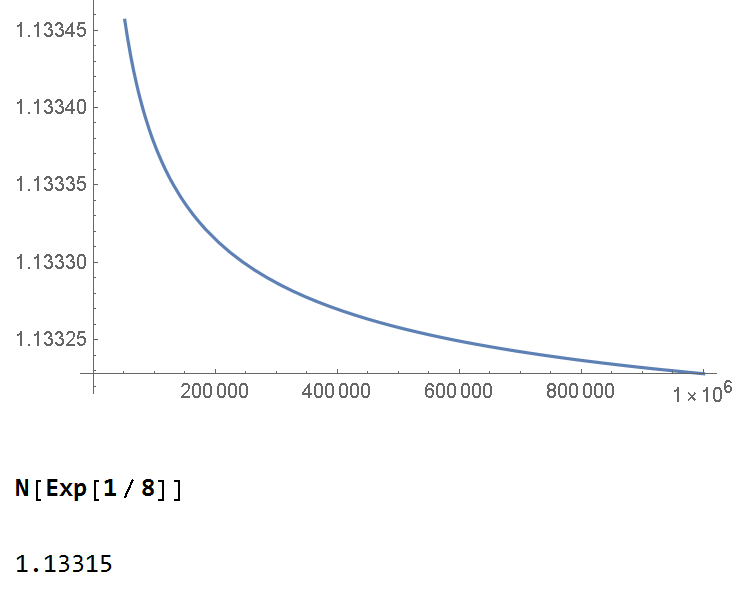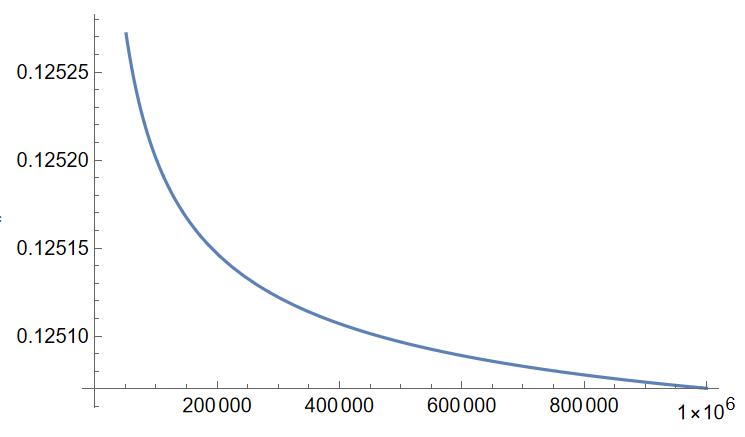Bug introduced in 12.0.0.0. and persisting through 14.3.
I wanted to calculate this limit:
Limit[E^(E^ProductLog[n] (-1 + E^(1/2 Sqrt[ProductLog[n]/n]))) (1 + 1/2 Sqrt[1/(n*ProductLog[n])])^-n, n -> Infinity] The correct result is E^(1/8)
Furthermore, it is true that
Limit[(E^(-(1/2) E^(ProductLog[n]/2)))/ (1 + 1/2 Sqrt[1/(n*ProductLog[n])])^-n, n -> Infinity] Therefore, it must be
Limit[E^(E^ProductLog[n] (-1 + E^(Sqrt[ProductLog[n]]/(2 Sqrt[n]))))*(E^(-(1/2) E^(ProductLog[n]/2))) , n -> Infinity] also equal to E^(1/8) But the result shocked me. Mathematica gives Infinity !!!
The graph confirms my original assumption
Plot[E^(E^ProductLog[n] (-1 + E^(Sqrt[ProductLog[n]]/(2 Sqrt[n]))))*(E^(-(1/2) E^(ProductLog[n]/2))) , {n, 1, 1000000}] On deeper analysis, I was able to better isolate the problem and have the following simpler example.
Limit[-(1/2) Sqrt[n/ProductLog[n]] + ((-1 + E^(1/(2 Sqrt[n/ProductLog[n]]))) n)/ ProductLog[n], n -> Infinity] again gives the wrong result of Infinity
The limit is equal to 1/8, which is supported by the following graph
Plot[-(1/2) Sqrt[n/ProductLog[n]] + ((-1 + E^(1/(2 Sqrt[n/ProductLog[n]]))) n)/ ProductLog[n], {n, 1, 1000000}] 





